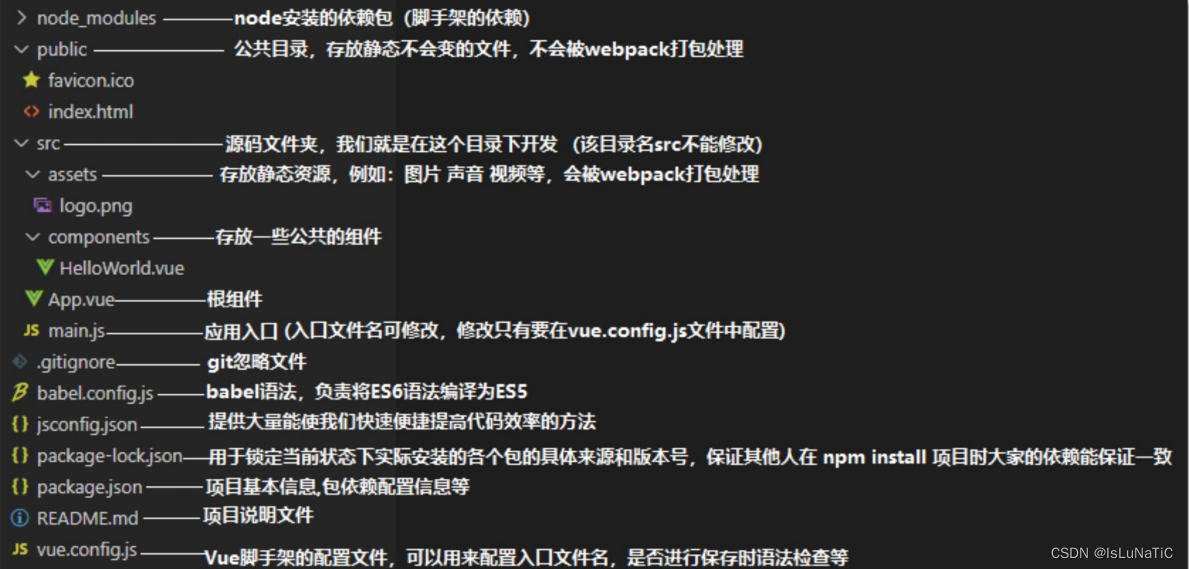Vue:组件化开发

一、组件的使用
1、创建组件(结构HTML 交互JS 样式CSS)
Vue.extend({该配置项和new Vue的配置项几乎相同,略有差别})
区别:①创建vue组件的时候,配置项中不能使用el配置项。(但是需要使用template配置项来配置模板语句)
②配置项中的data不能使用直接对象的形式,必须使用function。
2、注册组件
局部注册:在配置项当中使用components,即
components:{组件的名字:组件对象
}全局注册:Vue.component("组件的名字","组件对象");
3、使用组件
<div class="vues"><h1>{{msg}}</h1><userList></userList><!-- Property or method "users" is not defined on the instance but referenced during render. Make sure that this property is reactive,either in the data option, or for class-based components, by initializing the property. --><!-- <ul><li v-for="(user,index) in users" :key="user.id">{{index}} : {{user.name}}</li></ul> --></div><script>//1、注册组件const myComponent = Vue.extend({//option "el" can only be used during instance creation with the `new` keyword.// el: '.vues',template: `<ul><li v-for="(user,index) of users" :key="user.id">{{index}} : {{user.name}}</li></ul>`,//The "data" option should be a function that returns a per-instance value in component definitions.// data: {// users: [// { id: 1, name: 'p', age: 20 },// { id: 2, name: 'h', age: 21 },// { id: 3, name: 'b', age: 22 }// ]// }data() {return {users: [{ id: 1, name: 'p', age: 20 },{ id: 2, name: 'h', age: 21 },{ id: 3, name: 'b', age: 22 }]}}})new Vue({el: '.vues',data: {msg: '第一个组件',// users: [// { id: 1, name: 'p', age: 20 },// { id: 2, name: 'h', age: 21 },// { id: 3, name: 'b', age: 22 }// ]},components: {userlist: myComponent,}})</script>4、注意点:
①在Vue当中是可以使用自闭合标签,前提是必须在脚手架环境中使用。
②在创建组件的时候Vue.entend()可以省略,但是底层实际上还是会调用的,在注册组件时调用。
③组件名字:可以全部小写、首字母大写,后面小写、kebab-case命名法(串式命名法)、CamelCase命名法(驼峰命名法),只允许在脚手架环境使用,不要使用HTML内置的标签作为组件名字,在创建组件时,通过配置项配置一个name,这个name不是组建的名字,是设置Vue工具显示
5、组件的嵌套
<div class="vues"><apps></apps></div><script>const x = {template: `<div><h3>组件化开发</h3></div>`}const apps = Vue.extend({template: `<div><h1>组件化开发</h1><x></x></div>`,components: {x: x}})new Vue({el: '.vues',data: {msg: '组件嵌套'},components: {apps: apps}})</script>6、const VueComponent = Vue.extend()和const vm = new Vue({})的区别
①:new Vue({})配置项中的 this 就是:Vue 实例(vm)。
Vue.extend({})配置项中的 this 就是:VueComponent 实例(vc)。
②:Vue.extend 每一次的 extend 调用返回的都是一个全新的 VueComponent 函数。
7、单文件组件
定义:一个文件对应一个组件,命名格式:名字.vue。
结构:<template>HTML 代码</template>、
交互<script>JS 代码</script> 、样式<style>CSS 代码</style>。
export和import:
使用 export 导出(暴露)组件,在需要使用组件的 名称.vue 文件中使用 import 导入组件。
①默认导入和导出 export default {} --- import 任意名称 from ‘模块标识符’;
②按需导入和导出 export {a, b} --- import {a, b} from ‘模块标识符’;
③分别导出 export var name = ‘phb’ --- export function sayHi(){}。
8、脚手架

9、render函数
new Vue({render: h => h(App),// render(createElement) {// return createElement('h1', "phb")// }
}).$mount('#app')10、prop配置
使用 props 配置可以接收其他组件传过来的数据,让组件的数据变为动态数据,三种接收方式:
(1) 简单接收
props : [‘name’,’age’,’sex’](2) 接收时添加类型限制
props : {name : Stringage : Numbersex : String
}(3) 接收时添加类型限制,必要性限制,默认值
props : {name : {type : Number,required : true},age : {type : Number,default : 10},sex : {type : String,default : ‘男’}
}注意事项: 不要乱接收,接收的一定是其它组件提供的。 props 接收到的数据不能修改。(修改之后会报错,但页面会刷新。)可以找个中间变量来解决。
11、从父组件获取子组件
在组件上使用 ref 属性进行标识: <User ref=”userJack”></User>
在程序中使用$refs 来获取子组件: this.$refs.userJack。
访问子组件的属性:this.$refs.userJack.name
访问子组件的子组件属性: this.$refs.userJack.$refs.name
ref 也可以使用在普通的 HTML 标签上,这样获取的就是这个 DOM 元素:
<input type=”text” ref=”username”> this.$refs.username
12、mixins配置
如果冲突了,会执行组件自身的,不会执行混入的。(这是原则:混入的意思就是不破坏)
对于生命周期周期钩子函数来说,混入时,都有的话,采用叠加,先执行混入的,再执行自己的。
上面的混入属于局部混入,只混入到指定的组件当中。
13、局部样式scoped
使用这个元素,可以解决样式名一致,会导致冲突问题
<style scoped></style>